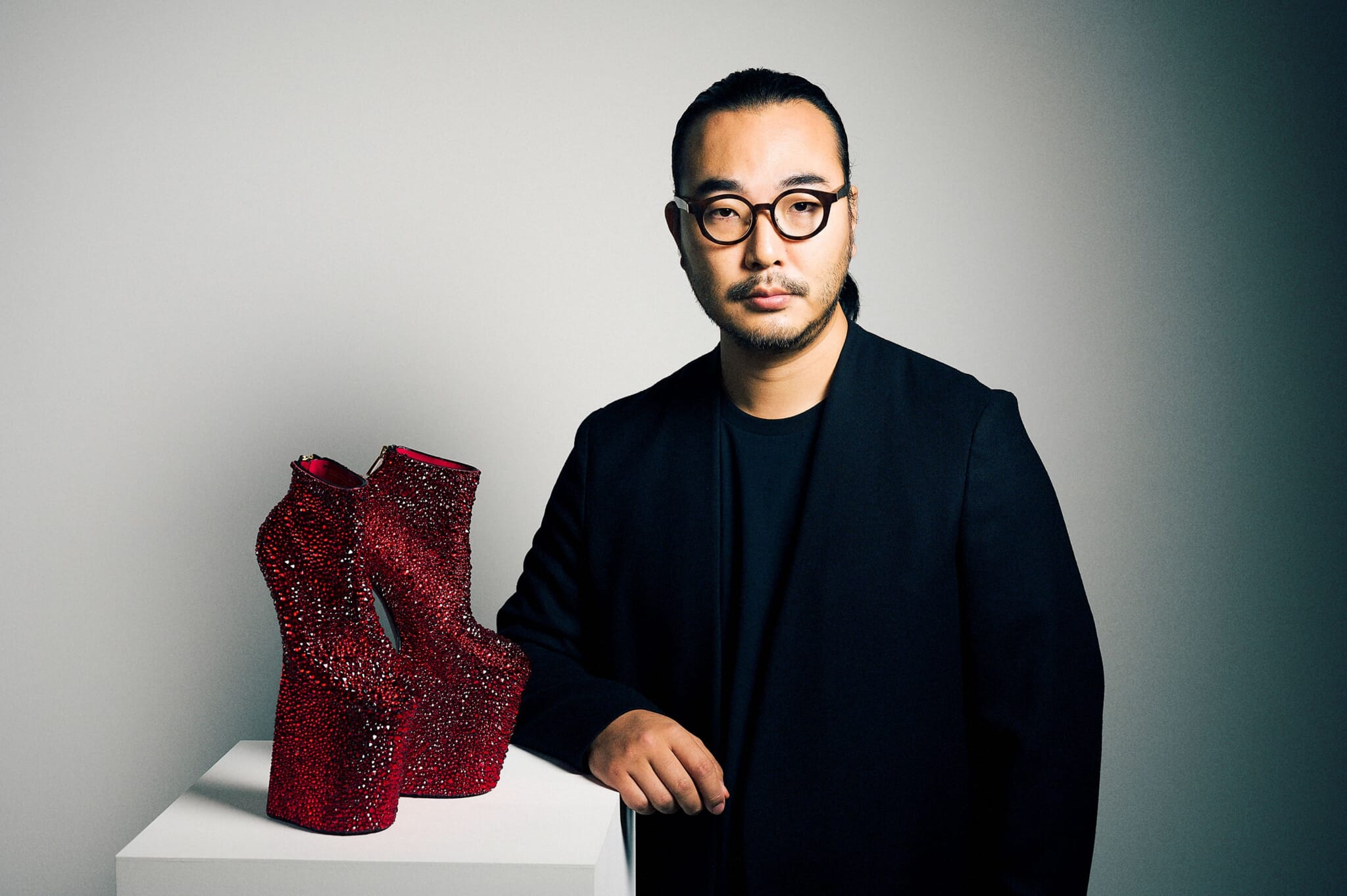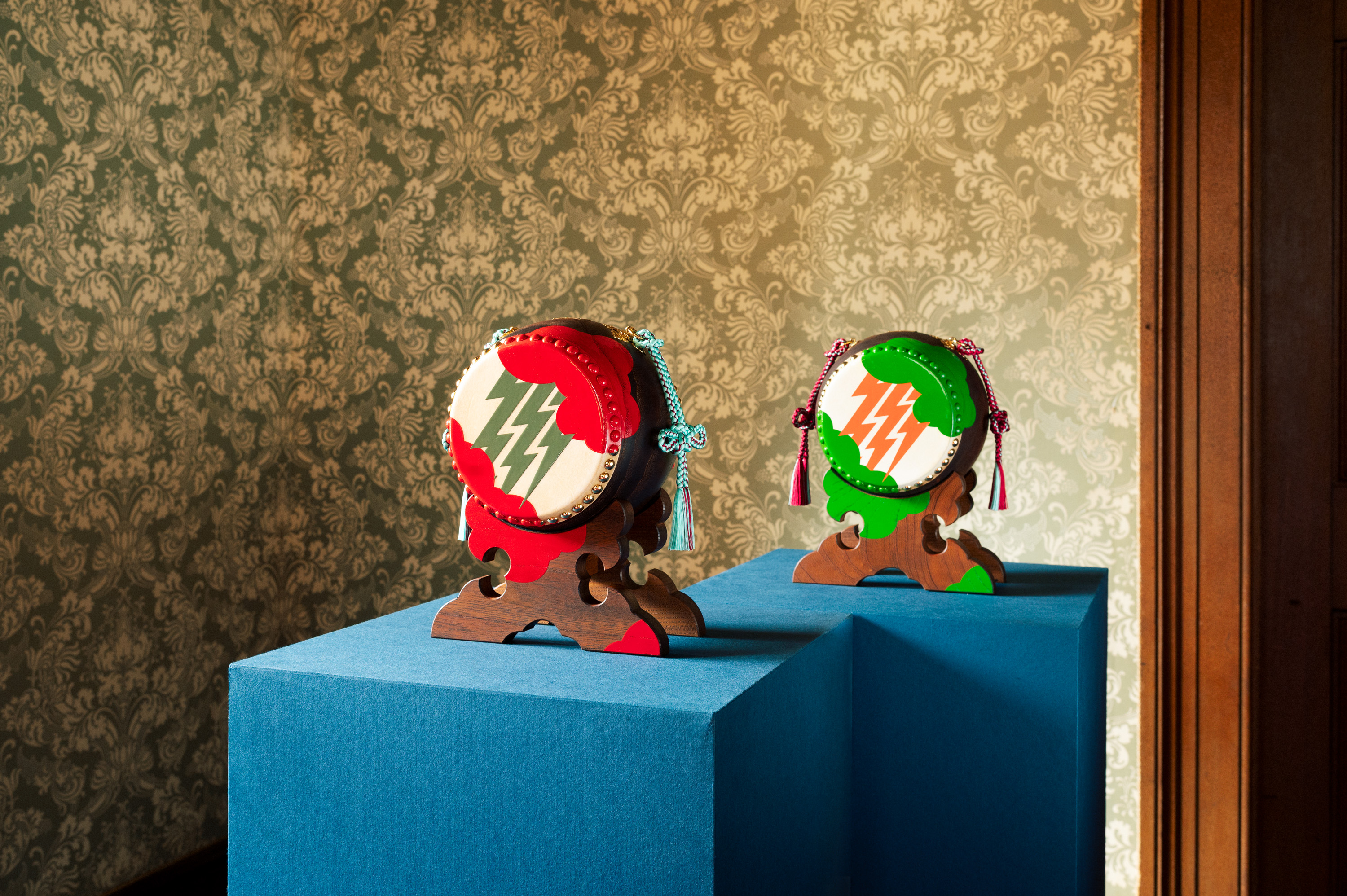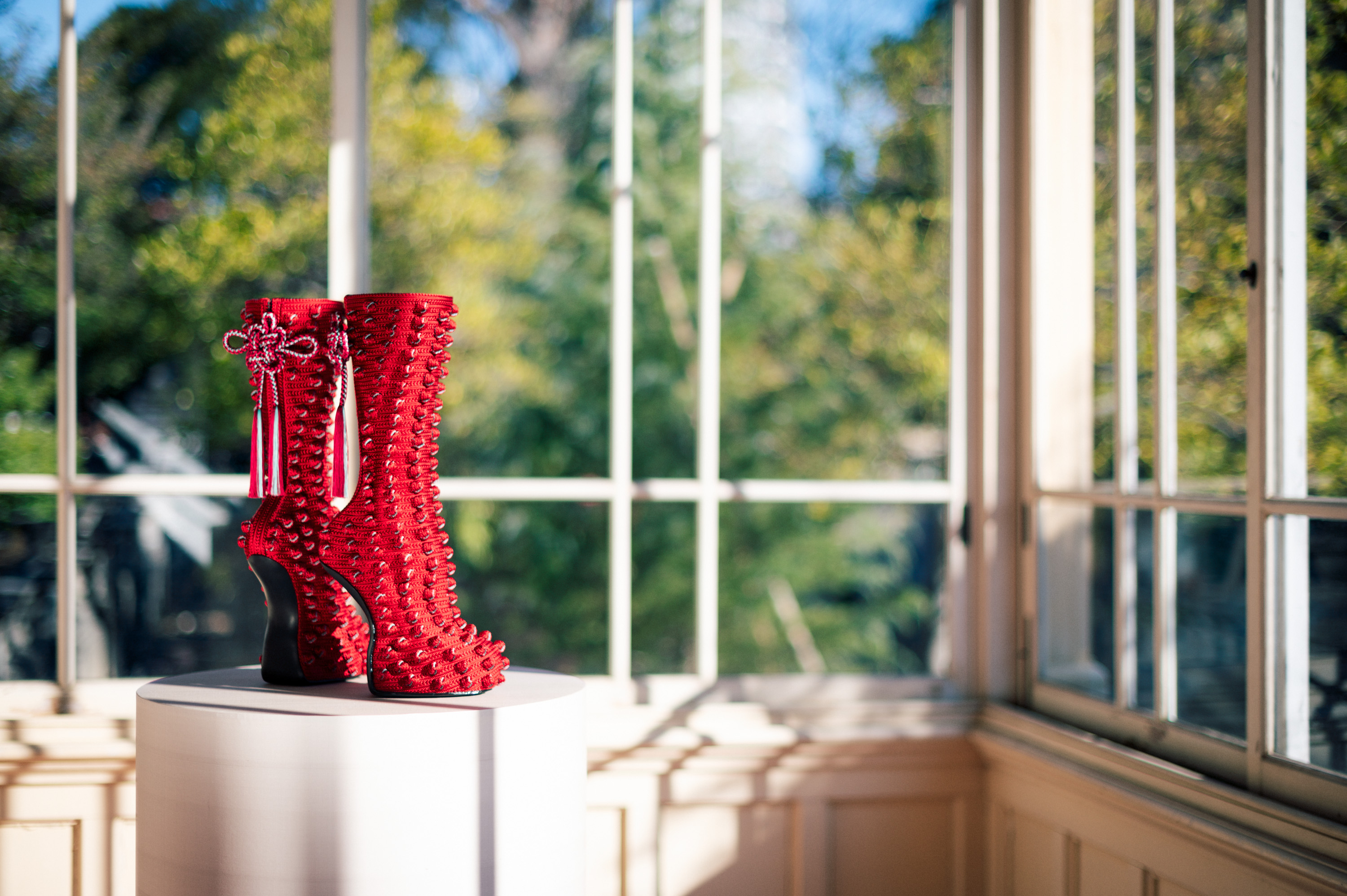In Japanese, the phrase onko chishin loosely translates to “derive new understanding from knowledge of the past.” It’s an expression thought to have originated from the teachings of the Analects of Confucius: “exploring the old and deducing the new makes a teacher.”
Onko chishin is at the core of designer and artist Noritaka Tatehana’s practice. While primarily known for his work as a shoe designer — his shoes have been worn by Lady Gaga and British designer Daphne Guinness to name just two — Tatehana studied fine art and Japanese craft at the Tokyo University of Arts, and traditional craftsmanship continues to inform much of his work today. Following the success of his first-ever solo exhibition in the United States, “Noritaka Tatehana: Refashioning Beauty,” Tatehana returns to Japan as the director of the “Edo Tokyo Rethink Exhibition” at the Kyu-Iwasaki-tei Gardens, a thoughtful fusion of takumi or skillful craftsmanship, and contemporary art.
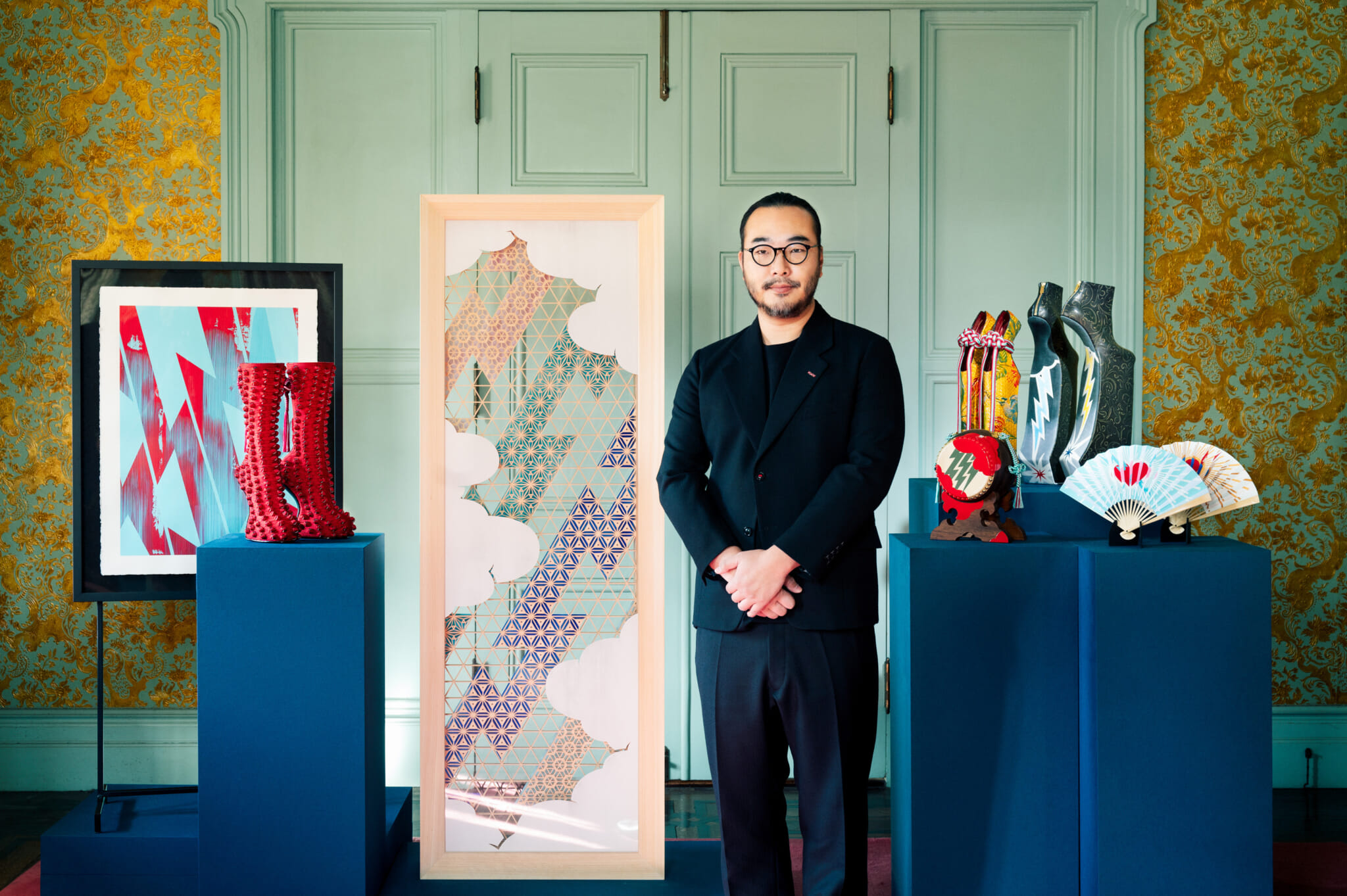
Utilizing the Collaborative Process
Led by the Edo Tokyo Kirari Project, the aim of the “Edo Tokyo Rethink” exhibition, which has been running annually since 2021, is to refine and rethink the skills and crafts of the Edo period through a contemporary lens. As Tatehana explains, the exhibition is an opportunity to “translate the cultural background of Tokyo’s traditional crafts and traditional industries, which have been passed down since the Edo period, through art and communicating them to the modern world.” He is driven by a desire to have audiences reconsider the value of traditional crafts, which he fears are suffering a dwindling of interest and appreciation in the modern day.
The exhibited works themselves, each made in collaboration with national industry businesses, range from variations on Tatehana’s legendary shoes, to Edo-style fans, hand-crafted Hake brushes, Taiko drums and even Kinkarakami Institute wallpaper. Tatehana explains how this sense of collaborative work took various forms during the conception of the exhibited works.
“There are collaborations that utilize the techniques of long-established businesses,” he says. “And they are collaborations where only raw materials are provided, and all production is done in my workshop. Another example is the collaboration with Ryu Kobo of Tokyo Kumihimo, where braided cords normally used as belts for kimono are used for different purposes, such as the upper fabric for my heel-less shoes.” This last form of collaboration, in particular, is demonstrative of how this desire to rethink is interwoven throughout the exhibition.
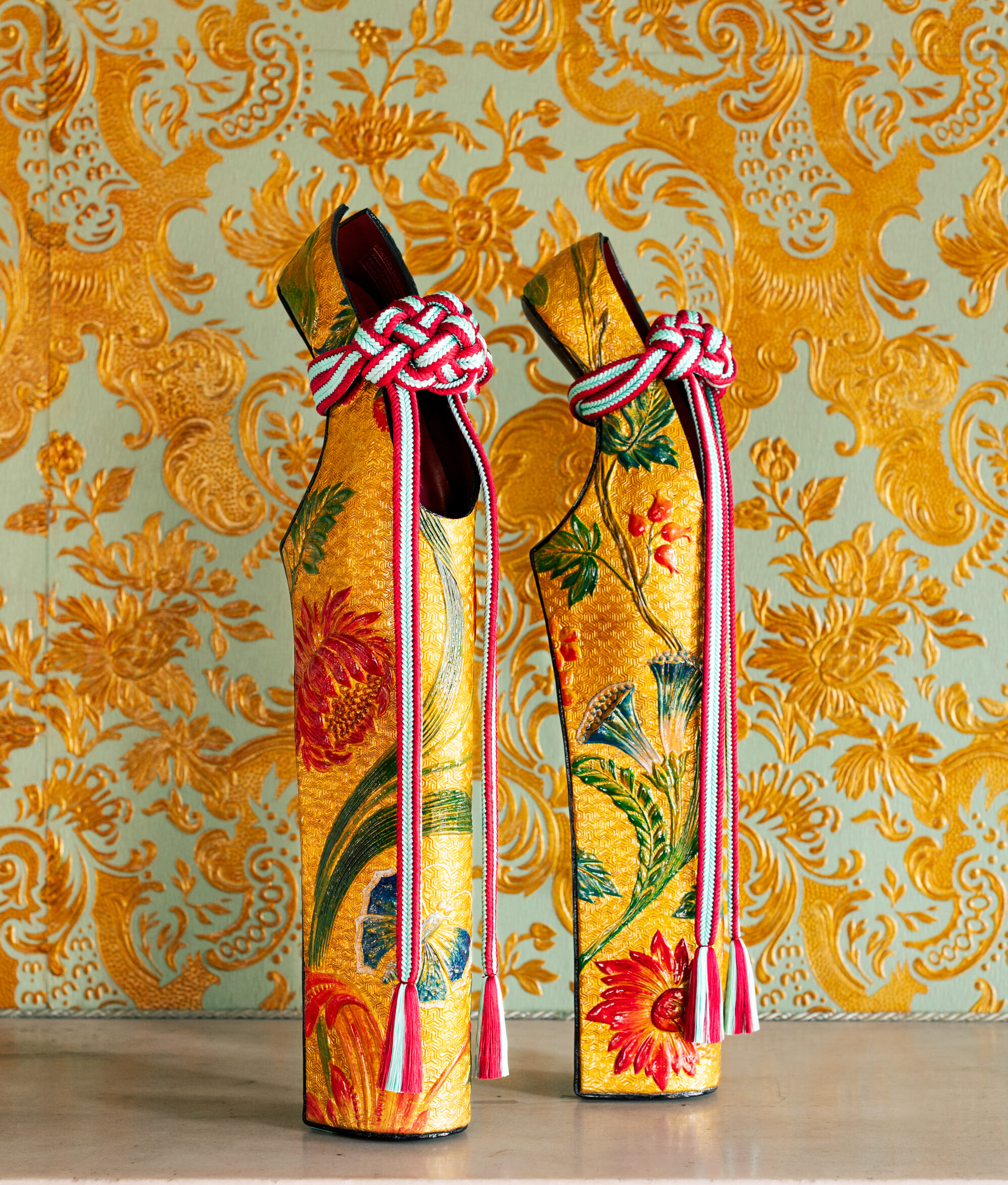
Drawing on Tradition
Tatehana explains how traditional craft has always featured in his work in some capacity. The infamous shoeless clogs, for example, take inspiration from the elevated clogs worn by courtesans during the Edo period.
“I also used to dye kimonos when I was at university”, Tatehana recalls. “And I once created a piece of work that utilized the structure of origami from a single piece of cloth or leather like a kimono, although, now, that idea seems rather commonplace to me.” Reflecting on his early years as a creator, Tatehana remembers his attraction to works that left “a strong visual impression”, but explains that today, he finds himself drawn to the cultural background, manners and customs of objects, asking why they were created and how they were used.
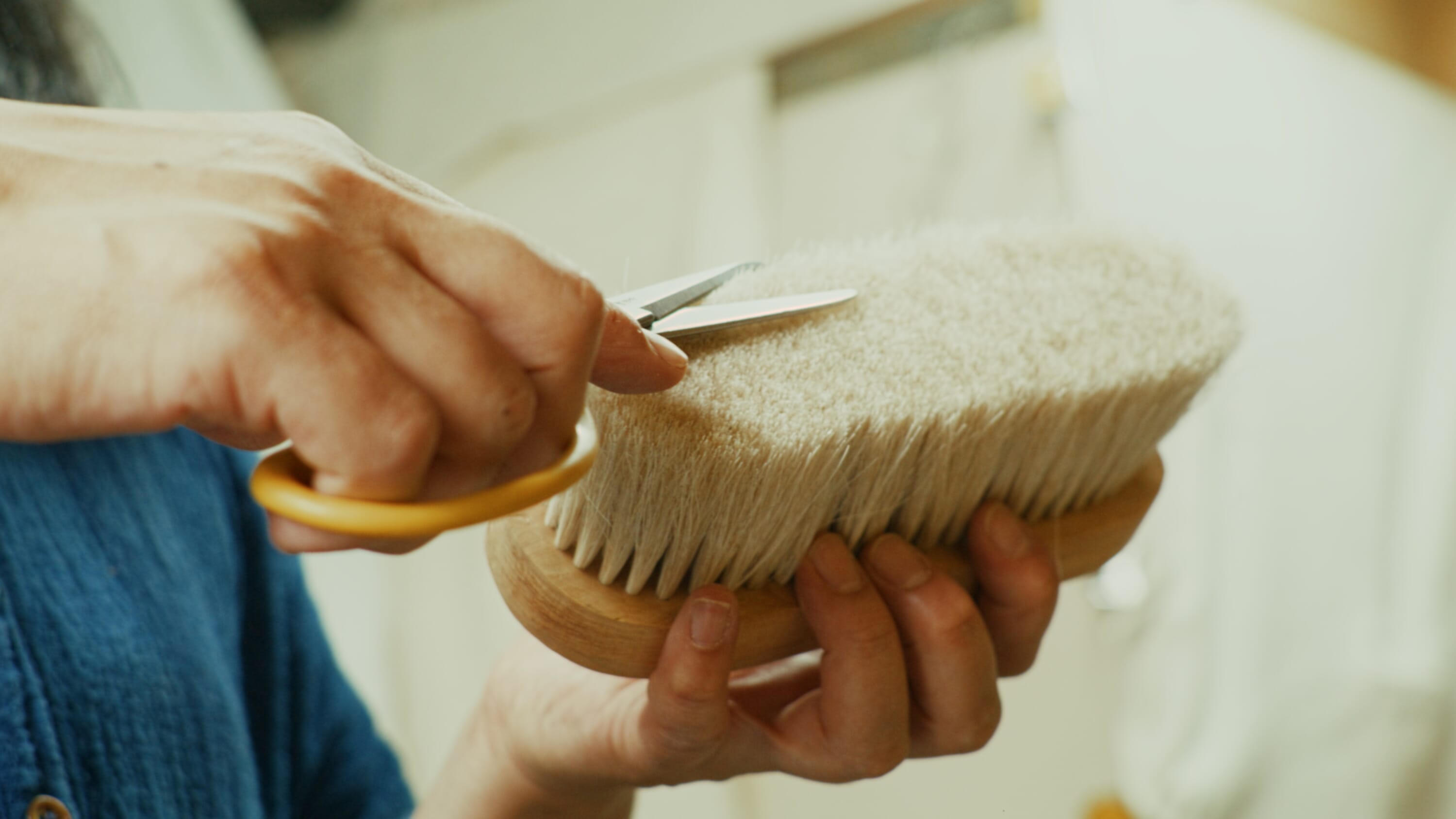
The hake brushes, which were made especially to produce the paintings, are displayed alongside the tools and materials with which they were made. “You very rarely get a window into the evolution of a product from its materials into the final work,” Tatehana explains. His decision to display the art works, alongside the tools from which they were made, helps to bridge this gap.
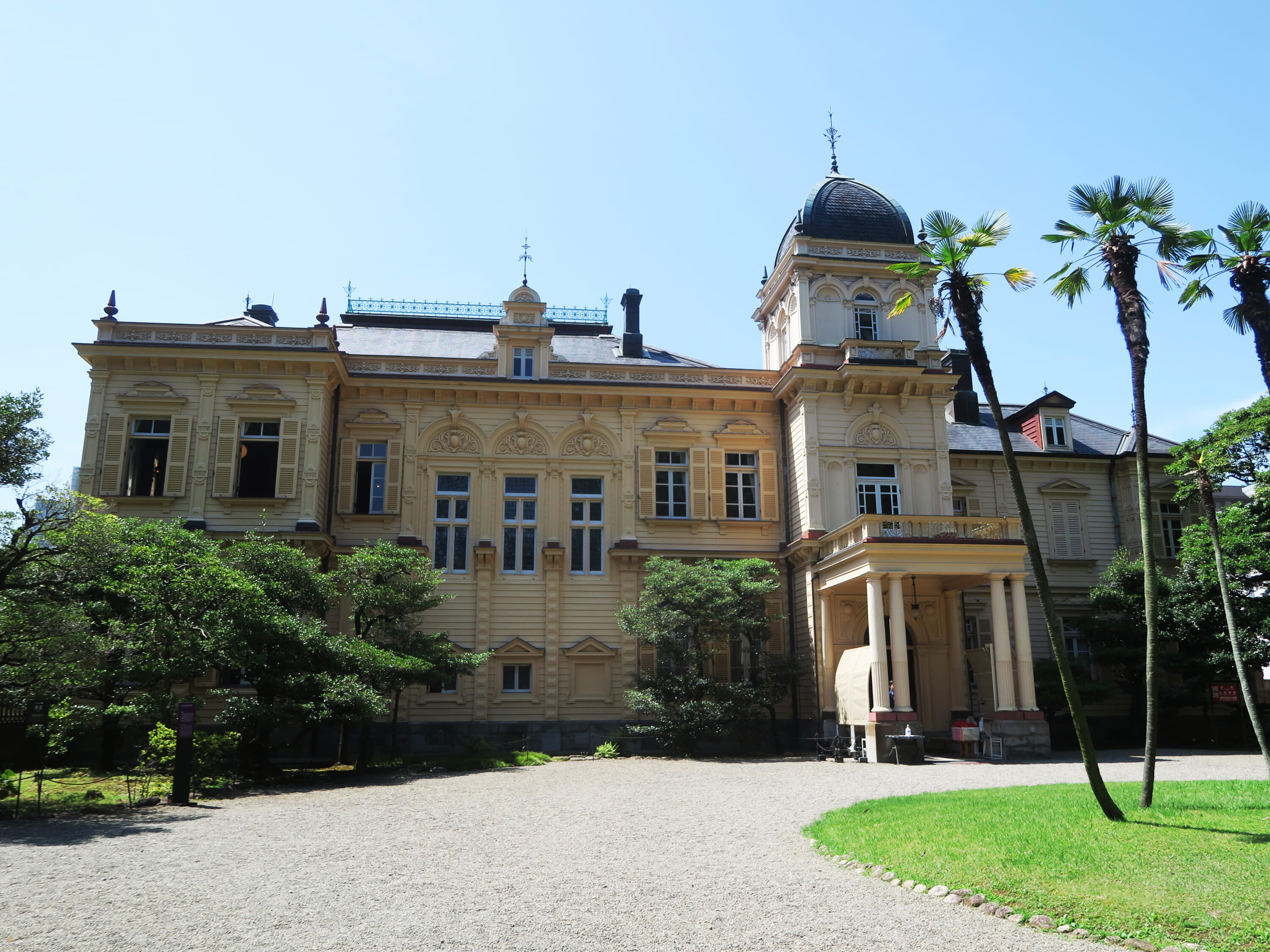
Exhibiting in National Cultural Property
This year’s exhibition venue provides a fecund location for the collection’s thematic roots to grow: shrouded in the southern corner of Ueno Park, the lush grounds of the Kyu-Iwasaki-tei Gardens surround the former residence of the Iwasaki family, the founders of industrial mogul Mitsubishi and one of Tokyo’s most powerful business families. This year’s Edo Tokyo Rethink exhibition takes place within these walls: in the Western house designed by Josiah Conder, as well as the original Japanese-style house attached to the residence.
To Tatehana’s mind, the decision to host the exhibition in such an important national property is underscored by his belief that “the act of viewing the exhibits in such a historic building itself leads to an experience that goes back and forth between past, present and future.” Indeed, as we walk around the house, and thus the exhibition, the antiquated atmosphere of the space certainly contributes to the overall effect; the history that emanates from the walls dovetails the traditional practices that have informed Tatehana and his collaborators’ works.
Tatehana expresses his hope that entrance into the building will “function as a device to take visitors back in time,” with the exhibits and works on display then allowing them to uncover the future for these traditional practices.
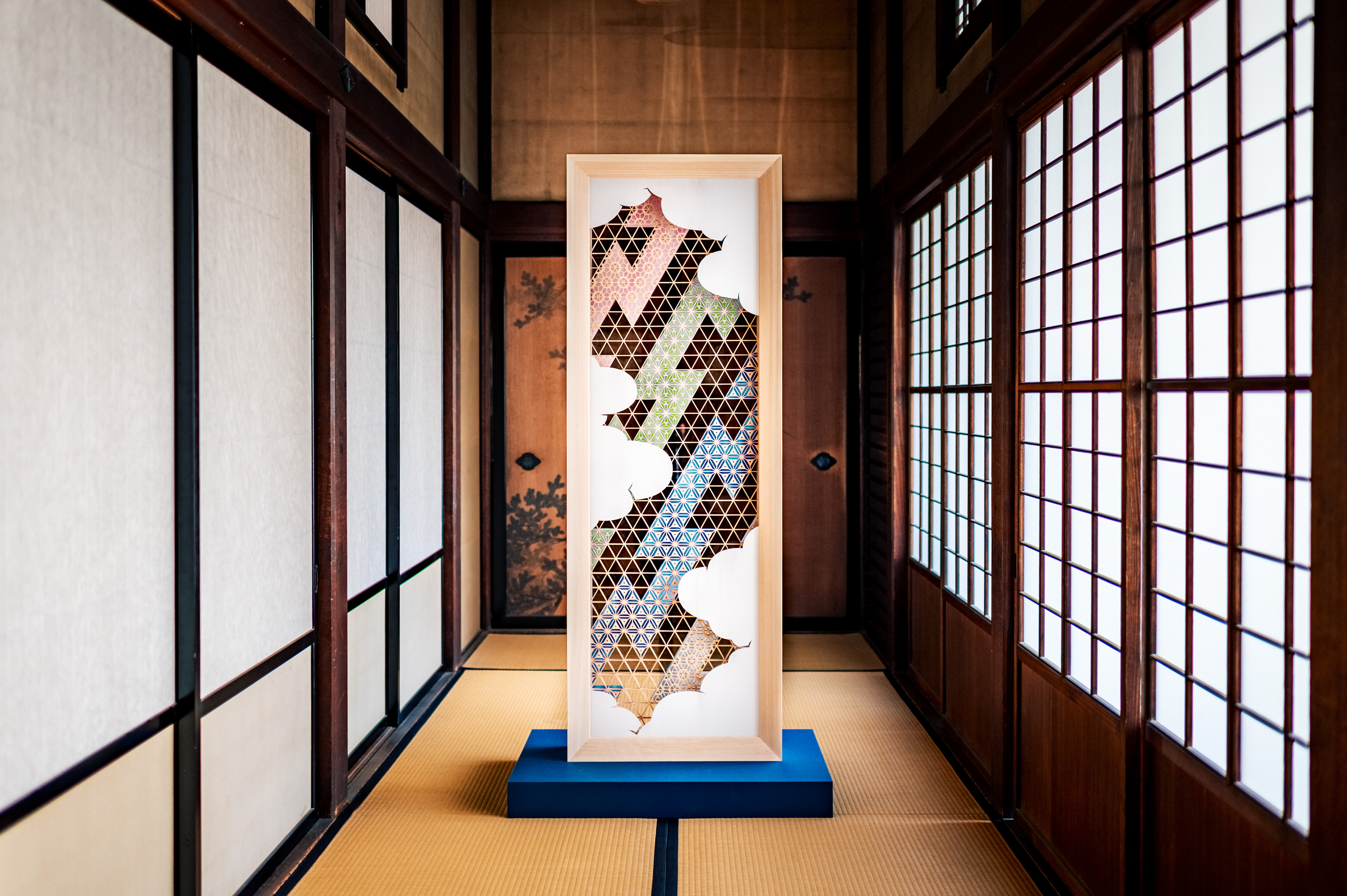
For creators like Tatehana, an investment in the past and one’s cultural inheritance is an important basis for creativity. But more than acting as an inspirational springboard, what grounds his art, and thus, the Edo Tokyo Rethink Exhibition, is a desire to revisit and revive these crafts. Even if the original, functional purpose of so many of these objects has been rendered redundant, this is a call to arms to have these storied traditions re-evaluated, appreciated as an art form in the contemporary age.
Exhibition Information
- Find out more about Noritaka Tatehana at his website here, or follow him on Instagram at @noritaka_tatehana.
- The Edo Tokyo Rethink Exhibition takes place at the Kyu-Iwasaki-tei Gardens from March 1 to March 10.
Related Posts
- Ishikawa’s Legacy Lives On After Noto Earthquake
- Top Japanese Architects that Shape the Country
- Totemo Art: Transforming Graffiti Art into Digital Currency
Updated On March 6, 2024

